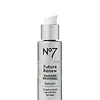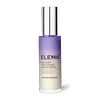What's inside
What's inside
 Key Ingredients
Key Ingredients

 Benefits
Benefits

 Concerns
Concerns

 Ingredients Side-by-side
Ingredients Side-by-side

Water
Skin ConditioningDimethicone
EmollientButylene Glycol
HumectantGlycerin
HumectantMethyl Gluceth-20
HumectantIsononyl Isononanoate
EmollientPolysilicone-11
Niacinamide
SmoothingPhenoxyethanol
PreservativeAcrylates/Beheneth-25 Methacrylate Copolymer
Tocopheryl Acetate
AntioxidantSilica
AbrasivePanthenol
Skin ConditioningPolysorbate 20
EmulsifyingCaprylyl Glycol
EmollientAmmonium Acryloyldimethyltaurate/Vp Copolymer
Potassium Hydroxide
BufferingXanthan Gum
EmulsifyingSodium Hyaluronate
HumectantHydrolyzed Rice Protein
Skin ConditioningDecyl Glucoside
CleansingPropylene Glycol
HumectantEthylhexylglycerin
Skin ConditioningAscorbyl Glucoside
AntioxidantPropanediol
SolventPentylene Glycol
Skin ConditioningTetrasodium EDTA
Hexylene Glycol
EmulsifyingT-Butyl Alcohol
PerfumingSodium Benzoate
MaskingMorus Alba Leaf Extract
Skin ConditioningPalmitoyl Tetrapeptide-94
Palmitoyl Tetrapeptide-95
Water, Dimethicone, Butylene Glycol, Glycerin, Methyl Gluceth-20, Isononyl Isononanoate, Polysilicone-11, Niacinamide, Phenoxyethanol, Acrylates/Beheneth-25 Methacrylate Copolymer, Tocopheryl Acetate, Silica, Panthenol, Polysorbate 20, Caprylyl Glycol, Ammonium Acryloyldimethyltaurate/Vp Copolymer, Potassium Hydroxide, Xanthan Gum, Sodium Hyaluronate, Hydrolyzed Rice Protein, Decyl Glucoside, Propylene Glycol, Ethylhexylglycerin, Ascorbyl Glucoside, Propanediol, Pentylene Glycol, Tetrasodium EDTA, Hexylene Glycol, T-Butyl Alcohol, Sodium Benzoate, Morus Alba Leaf Extract, Palmitoyl Tetrapeptide-94, Palmitoyl Tetrapeptide-95
Water
Skin ConditioningCoco-Caprylate
EmollientGlycerin
HumectantSteareth-2
EmulsifyingCetearyl Alcohol
EmollientPhenoxyethanol
PreservativeHydroxyacetophenone
AntioxidantPhyllanthus Emblica Fruit Extract
HumectantSteareth-21
CleansingPropanediol
SolventDiheptyl Succinate
EmollientCarbomer
Emulsion StabilisingDisodium EDTA
Capryloyl Glycerin/Sebacic Acid Copolymer
Skin ConditioningParfum
MaskingXanthan Gum
EmulsifyingLunaria Annua Seed Oil
EmollientSodium Hydroxide
BufferingHydrolyzed Hyaluronic Acid
HumectantHydrolyzed Verbascum Thapsus Flower
AntioxidantMyrothamnus Flabellifolia Leaf/Stem Extract
HumectantCrocus Sativus Flower Extract
MaskingSaccharide Hydrolysate
HumectantLimonene
PerfumingCananga Odorata Flower Oil
MaskingCitrus Aurantium Bergamia Fruit Oil
MaskingCitrus Aurantium Dulcis Peel Oil
MaskingEugenia Caryophyllus Bud Oil
MaskingJuniperus Mexicana Oil
MaskingLavandula Angustifolia Oil
MaskingCitric Acid
BufferingSodium Benzoate
MaskingTocopherol
AntioxidantPropylene Glycol Dicaprylate/Dicaprate
EmollientNelumbo Nucifera Flower Extract
Skin ConditioningPotassium Sorbate
PreservativeAscorbic Acid
AntioxidantHydrolyzed Yeast Protein
Skin ConditioningEugenol
PerfumingLinalool
Perfuming1,2-Hexanediol
Skin ConditioningCaprylyl Glycol
EmollientCitrus Aurantium Amara Leaf/Twig Oil
MaskingPolianthes Tuberosa Flower Extract
PerfumingRosmarinus Officinalis Leaf Oil
MaskingVetiveria Zizanoides Root Oil
MaskingAnthemis Nobilis Flower Oil
MaskingCitrus Aurantium Flower Oil
PerfumingCymbopogon Nardus Oil
MaskingJasminum Officinale Flower Extract
MaskingJasminum Sambac Flower Extract
MaskingLitsea Cubeba Fruit Oil
MaskingMyrocarpus Fastigiatus Oil
MaskingCitrus Aurantium Amara Flower Oil
MaskingWater, Coco-Caprylate, Glycerin, Steareth-2, Cetearyl Alcohol, Phenoxyethanol, Hydroxyacetophenone, Phyllanthus Emblica Fruit Extract, Steareth-21, Propanediol, Diheptyl Succinate, Carbomer, Disodium EDTA, Capryloyl Glycerin/Sebacic Acid Copolymer, Parfum, Xanthan Gum, Lunaria Annua Seed Oil, Sodium Hydroxide, Hydrolyzed Hyaluronic Acid, Hydrolyzed Verbascum Thapsus Flower, Myrothamnus Flabellifolia Leaf/Stem Extract, Crocus Sativus Flower Extract, Saccharide Hydrolysate, Limonene, Cananga Odorata Flower Oil, Citrus Aurantium Bergamia Fruit Oil, Citrus Aurantium Dulcis Peel Oil, Eugenia Caryophyllus Bud Oil, Juniperus Mexicana Oil, Lavandula Angustifolia Oil, Citric Acid, Sodium Benzoate, Tocopherol, Propylene Glycol Dicaprylate/Dicaprate, Nelumbo Nucifera Flower Extract, Potassium Sorbate, Ascorbic Acid, Hydrolyzed Yeast Protein, Eugenol, Linalool, 1,2-Hexanediol, Caprylyl Glycol, Citrus Aurantium Amara Leaf/Twig Oil, Polianthes Tuberosa Flower Extract, Rosmarinus Officinalis Leaf Oil, Vetiveria Zizanoides Root Oil, Anthemis Nobilis Flower Oil, Citrus Aurantium Flower Oil, Cymbopogon Nardus Oil, Jasminum Officinale Flower Extract, Jasminum Sambac Flower Extract, Litsea Cubeba Fruit Oil, Myrocarpus Fastigiatus Oil, Citrus Aurantium Amara Flower Oil
 Reviews
Reviews

Ingredients Explained
These ingredients are found in both products.
Ingredients higher up in an ingredient list are typically present in a larger amount.
Caprylyl Glycol is a humectant and emollient, meaning it attracts and preserves moisture.
It is a common ingredient in many products, especially those designed to hydrate skin. The primary benefits are retaining moisture, skin softening, and promoting a healthy skin barrier.
Though Caprylyl Glycol is an alcohol derived from fatty acids, it is not the kind that can dry out skin.
This ingredient is also used as a preservative to extend the life of products. It has slight antimicrobial properties.
Learn more about Caprylyl GlycolGlycerin is already naturally found in your skin. It helps moisturize and protect your skin.
A study from 2016 found glycerin to be more effective as a humectant than AHAs and hyaluronic acid.
As a humectant, it helps the skin stay hydrated by pulling moisture to your skin. The low molecular weight of glycerin allows it to pull moisture into the deeper layers of your skin.
Hydrated skin improves your skin barrier; Your skin barrier helps protect against irritants and bacteria.
Glycerin has also been found to have antimicrobial and antiviral properties. Due to these properties, glycerin is often used in wound and burn treatments.
In cosmetics, glycerin is usually derived from plants such as soybean or palm. However, it can also be sourced from animals, such as tallow or animal fat.
This ingredient is organic, colorless, odorless, and non-toxic.
Glycerin is the name for this ingredient in American English. British English uses Glycerol/Glycerine.
Learn more about GlycerinPhenoxyethanol is a preservative that has germicide, antimicrobial, and aromatic properties. Studies show that phenoxyethanol can prevent microbial growth. By itself, it has a scent that is similar to that of a rose.
It's often used in formulations along with Caprylyl Glycol to preserve the shelf life of products.
Propanediol is an all-star ingredient. It softens, hydrates, and smooths the skin.
It’s often used to:
Propanediol is not likely to cause sensitivity and considered safe to use. It is derived from corn or petroleum with a clear color and no scent.
Learn more about PropanediolSodium Benzoate is a preservative. It's used in both cosmetic and food products to inhibit the growth of mold and bacteria. It is typically produced synthetically.
Both the US FDA and EU Health Committee have approved the use of sodium benzoate. In the US, levels of 0.1% (of the total product) are allowed.
Sodium benzoate works as a preservative by inhibiting the growth of bacteria inside of cells. It prevents the cell from fermenting a type of sugar using an enzyme called phosphofructokinase.
It is the salt of benzoic acid. Foods containing sodium benzoate include soda, salad dressings, condiments, fruit juices, wines, and snack foods.
Studies for using ascorbic acid and sodium benzoate in cosmetics are lacking, especially in skincare routines with multiple steps.
We always recommend speaking with a professional, such as a dermatologist, if you have any concerns.
Learn more about Sodium BenzoateWater. It's the most common cosmetic ingredient of all. You'll usually see it at the top of ingredient lists, meaning that it makes up the largest part of the product.
So why is it so popular? Water most often acts as a solvent - this means that it helps dissolve other ingredients into the formulation.
You'll also recognize water as that liquid we all need to stay alive. If you see this, drink a glass of water. Stay hydrated!
Learn more about WaterXanthan gum is used as a stabilizer and thickener within cosmetic products. It helps give products a sticky, thick feeling - preventing them from being too runny.
On the technical side of things, xanthan gum is a polysaccharide - a combination consisting of multiple sugar molecules bonded together.
Xanthan gum is a pretty common and great ingredient. It is a natural, non-toxic, non-irritating ingredient that is also commonly used in food products.
Learn more about Xanthan Gum